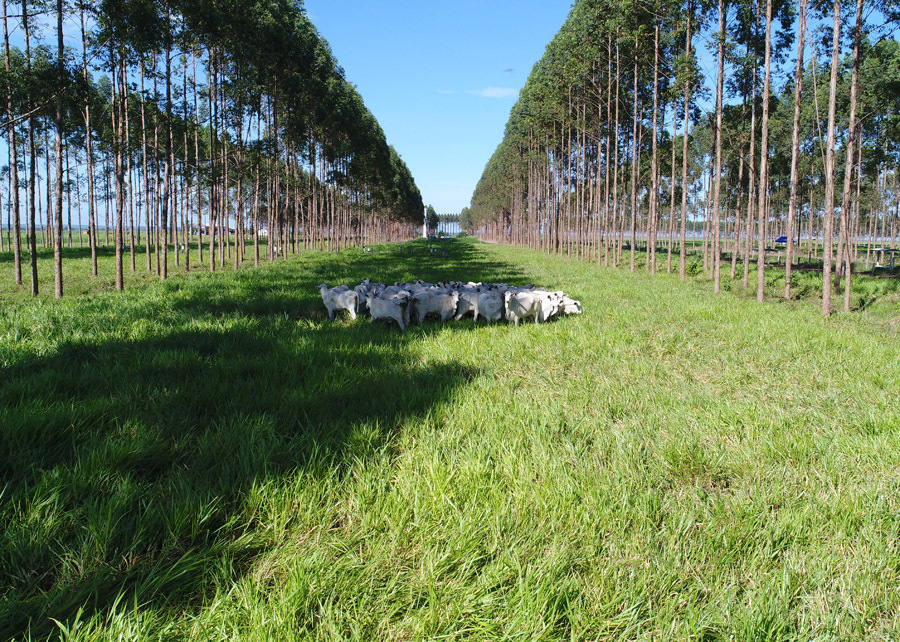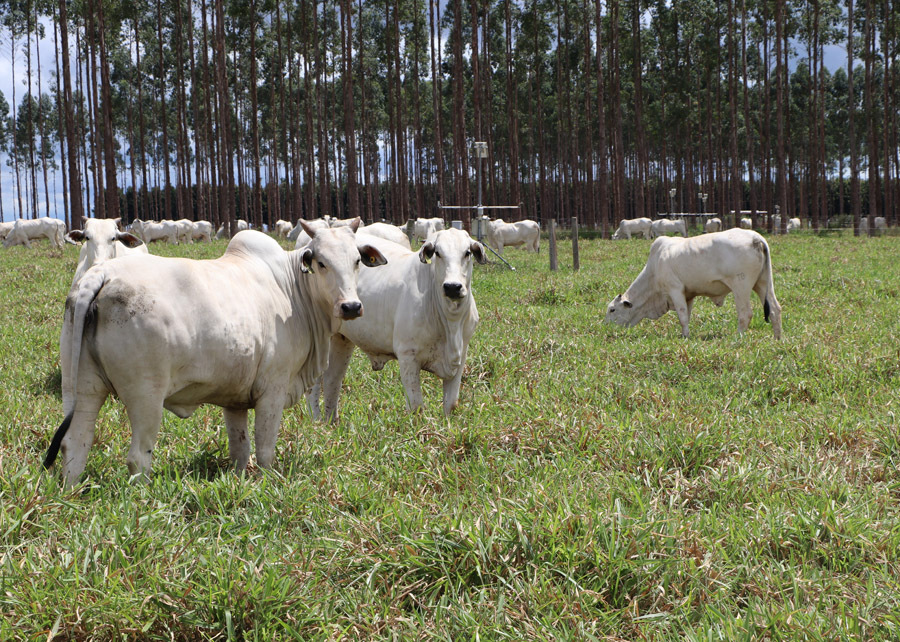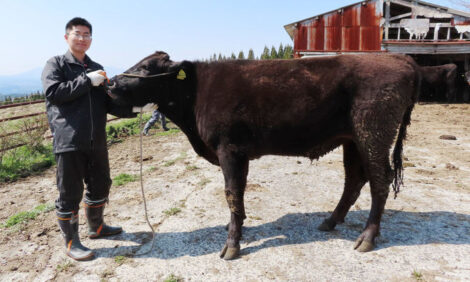



Immune response of Nellore heifers is higher in crop-livestock-forestry systems
Research shows that heifers grazing in shaded systems have lower contamination than those in pasture with lower parasite loadThe immune response of Nellore heifers in integrated crop-livestock-forestry systems (ICLFS) to an antigen was higher than the response in animals in single pastures. The results obtained in research carried out at Embrapa Agrosilvopastoral (Mato Grosso, Brazil) helps to understand the dynamics of helminthiases in herds in different production systems. In addition, it can be applied to other diseases and parasitosis.
The study, made in partnership with the Associação dos Criadores de Mato Grosso (Mato Grosso Breeders Association - Acrimat) and the Associação dos Criadores do Norte de Mato Grosso (Northern Mato Grosso Breeders Association - Acrinorte), closes a cycle of research on animal health related to nematodes. Besides, it opens up new perspectives on herd management in rural properties.
"The farm can have different modules, for animal categories. If it is not of interest to plant trees on the entire farm, you can plant some in an area where you can put the younger animals," says Embrapa researcher Luciano Lopes.
Previous results obtained in the same experiment had already shown that Nellore heifers in ICLFS gain more weight and have higher sexual precocity. "In the reproduction part, we observed a difference between the systems. So it is a triple win. Weight gain by itself, weight gain influencing sexual precocity and, in parallel, the better immune response. For heifers, especially, it would be very interesting to use the ICLFS", the researcher says.
Benefits of heifers in ICLFS
 |
A series of studies has proven important advantages in raising heifers in integrated crop-livestock-forestry systems:
- More weight gain
- More sexual precocity
- Higher immune response
The study showed that, even though there are more nematode larvae in the free-living phase of silvopastoral (livestock-forestry) systems, heifers in these sites showed less parasite infestation. Besides, it was found that, when assessing the occurrence of helminthiases throughout the year, their high or low incidence occurs without significant difference caused by the production system. Thus, animals raised on pasture in full sun or in tree shading systems do not need to undergo different anthelmintic processes.
Research path
The result obtained on the cattle's immune response was the last stage of a study that began by analyzing the occurrence of nematodes (helminths or worms) in single, non-intercropped pastures and in integrated livestock-forestry systems. The first finding was that the improvement of the microclimate caused by the tree shade favored the occurrence of nematode larvae in the free-living stage in the pasture.
However, contrary to expectations, heifers that grazed in shaded systems presented lower contamination than those that were in pasture with a lower parasite load. This was confirmed the nematode egg count present in the animals' feces.
According to Lopes, two hypotheses were considered as explanation. The first one was that the shade also favored the occurrence of Coleoptera beetles, such as the gazella scarab, which prey on larvae in feces deposited on the ground, preventing contamination of a host. The second one concerned the animals' immune response. The first hypothesis was refuted in research carried out in the same experiment by Embrapa Agrosilvopastoral, in which no difference was found in the occurrence of Coleoptera beetles in the systems.
"Since the pastures were well managed, we had a greater load of cattle support in the single pasture and a higher amount of feces. This favored the occurrence of Coleoptera beetles in these sites. In addition, the well-managed pasture itself already provides some protection, which generates a better environment for the insects. Thus, we saw that the abundance of food has higher impact than the environmental issue on the Coleoptera population," the researcher explains.
To assess the immune response hypothesis, part of the heifers in three different treatments (single pasture, ILF with single eucalyptus rows, and ILF with triple eucalyptus rows) was challenged by a tick vaccine. The goal was to check the immune response to antigens among groups of animals in different systems and compare them with heifers that did not receive the immunizer.
Through a blood test, it was observed that the vaccine had an effect on the proliferation of defense cells and that the heifers in the two systems with trees had a more effective cellular response, with higher proliferation of lymphocytes, than those in non-shaded pasture.
"Lymphocytes are defense cells that will produce specific antibodies to fight the antigen. In the case of parasites, the cellular response is more important. Therefore, we looked at the proliferation of lymphocytes after antigen inoculation through the vaccine," Lopes says.
According to the researcher, the better immune response is the reason for the lower parasite infestation in heifers grazing in the silvopastoral system.

Helminthiases
Helminthiases are responsible for large losses in beef cattle, either due to weight loss or to a delay in the reproductive period. Thus, understanding both the parasite cycle in different systems and control strategies are important information to assist farmers.
In research conducted at Embrapa Agrosilvopastoral, it was observed that cattle are more vulnerable to parasitoses from their 6th to their 18th month of age. After their 18th month, the immune system is already better developed and the animal, even though it still carries the parasite, suffers less harm.
Another evidence was that there is variance throughout the year in the parasitic load of animals, with a higher incidence in February and March, the final stage of the rainy season, and in September, at the end of the dry season. This variation was observed in all production systems. This finding reinforces the recommendation to carry out strategic control, with anthelmintic procedures made only in months 5, 7 and 9 instead of all herd management in the corral.
"Ranchers must maintain strategic control, as this is efficient to keep the herd protected. Thus, it avoids unnecessary anthelmintic procedures, and reduces costs and delays in the process of creating helminths'; resistance to the active ingredient used in to fight them," Lopes recommends.
By the control strategy, when the procedures are made in months 5 and 7, they help to reduce parasites, whose peak occur by the end of the rainy season. When made in month 9, the procedures have the function of reducing the load for the beginning of the rainy season, which reduces the nematode population over time.


